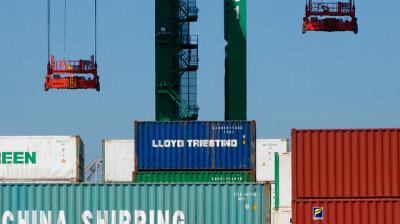The Mexican economy has not been a highflyer for many years. In the period between 1994 (the start of NAFTA) and 2016, annual economic growth averaged 2.6%. That is a modest performance for a country that has a large pool of young and cheap labour, a wealth of natural resources and a location adjacent to its American sales markets. Mexico's structural economic potential is limited, however, by persistent insecurity and corruption, weak regulatory institutions and an inadequate education system. Mexican exports also include a large import component, which means relatively little from Mexico is added to the export product.
The latest prospects for the Mexican economy were already thin. In November the IMF calculated that the Mexican economy would post modest growth of 2.1% in 2016, with growth in 2017 expected to stabilise at 2.2%[1]. The 2016 growth primarily resulted from substantial employment growth, rising real wages and growth in borrowing by Mexican households. This led to growth in consumption. Weak US industrial growth limited Mexican export and investment growth. The IMF nevertheless assumed that US industrial growth would pick up again in 2017, leading to renewed growth in Mexican investments and exports. After all, 80% of Mexican exports go to the US.
The international financial markets were well disposed towards Mexico, as its financial and monetary base was reasonable and the Mexicans had conducted a cautious but responsible economic policy in various areas. The Mexican peso was floating freely and had already depreciated substantially in recent years. With inflation around 3%, a sustainable current account deficit, a government deficit of 3.5% and government debt of 56%, that base is not bad. The underlying macro-financial situation in Mexico is also favourable: Mexican companies have a low level of debt (around 25% of GDP) and the debts have long maturities on average. Mexican households also have low average debt backed by sufficient financial and non-financial assets. Banks are well capitalised, with high liquidity ratios and healthy loan books.
The Mexicans will badly need these ‘reserves’, however. Trump’s arrival in office puts a big dent in the fragile economic situation. The renegotiation of NAFTA, the building of the border wall and the introduction of a 20% import tariff on Mexican goods will have very fundamental economic consequences. The car manufacturer Ford and the air conditioning manufacturer Carrier have already decided not to build any new plants in Mexico. It is almost inevitable that with falling exports to the US, a sharp drop in the value of the peso, rising inflation, declining consumer and investor confidence and a tighter financing situation Mexico will go into economic recession in 2017.
This recession will lead to a rising government deficit, increasing unemployment and declining purchasing power. It is quite conceivable that this could lead to a sharp increase in social and political unrest in Mexico. The Mexican presidential elections in June next year – and the run-up to them in 2017 – will lead to further political polarisation. The candidate from the current governing party, the Institutional Revolutionary Party (PRI), will find it difficult to counter the left-wing populist Andrés Manuel López Obrador (AMLO). He is anti-establishment and sees Fidel Castro as a hero. He also describes himself as a follower of the former Mexican President General Cardenas, who nationalised the Mexican oil industry and set up Pemex in 1938[2]. With a large and growing proportion of the population living in poverty[3], AMLO has a very good chance of winning the presidency in 2018 after two almost successful attempts in 2006 and 2012. His policy will include a left-wing stimulus and redistribution policy with possible nationalisations. This will pose a growing political risk for businesses and international investors, but also for the US.
With a looming economic contraction and the growing prospect of a leftward shift, the investment climate in Mexico will deteriorate rapidly. In the longer term too, however, this policy and the accompanying situation will be a growing headache for the Americans. After all, recession and increasing political polarisation will greatly weaken the Mexican state and its institutions. A weak Mexican state will find it immensely difficult to curb the drug gangs; violence and corruption will increase. Demographic pressure will therefore also be a factor. There are already 111 million Mexicans and the population is growing faster than that of the US. The pressure of illegal migration from Mexico to the US will increase. With the border wall constructed, many illegal immigrants might try to enter the US over sea. We could then see the same pictures in the US as we currently see in the Mediterranean sea.
The US will also face a growing problem within its own borders, as the 11 million Mexican Americans will also begin to stir in these troubled times.
Trump’s Mexico policy may cut the number of illegal immigrants in the short term. Some tens of thousands of jobs may also be created in the US. But these benefits are negligible compared to the possible destabilisation over time of a weak and turbulent Mexico on the southern border of the US. The price of the Trump policy may turn out to be a very high one.
[1] IMF, Mexico 2016 Article IV Consultation Paper, 22 November 2016.
[2] Miami Herald, ‘Mexico may veer to the left in 2018’, 8 June 2016
[3] In 2014 46% of the Mexican population lived below the poverty line, particularly in the countryside and among the indigenous population. Most of the poor worked on small farms and in small informal businesses. Congressional Research Service: ‘Mexico: Background and U.S. Relations’, 30 March 2016



